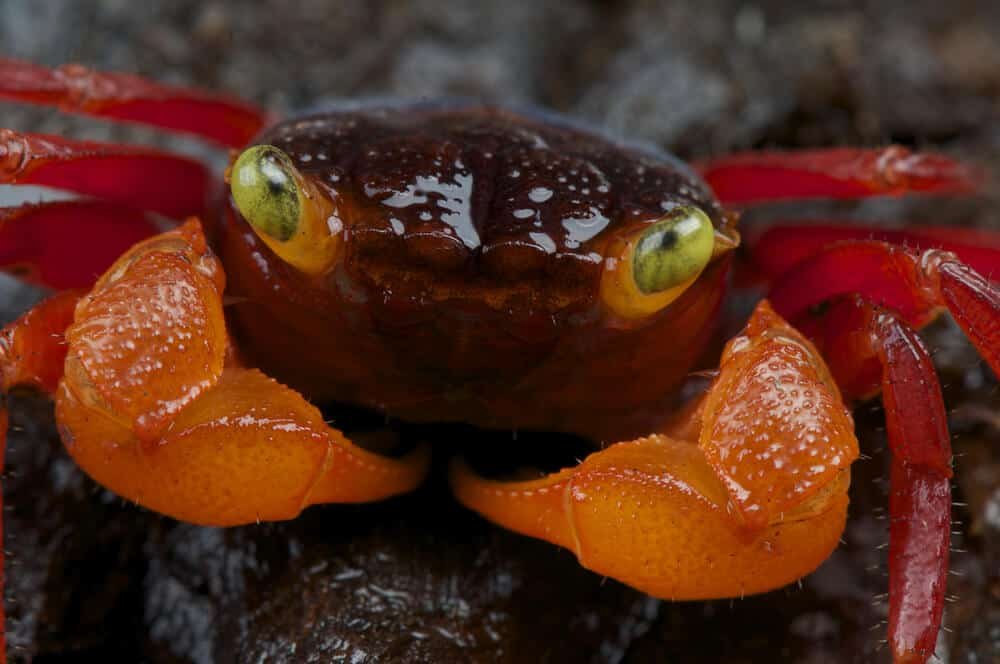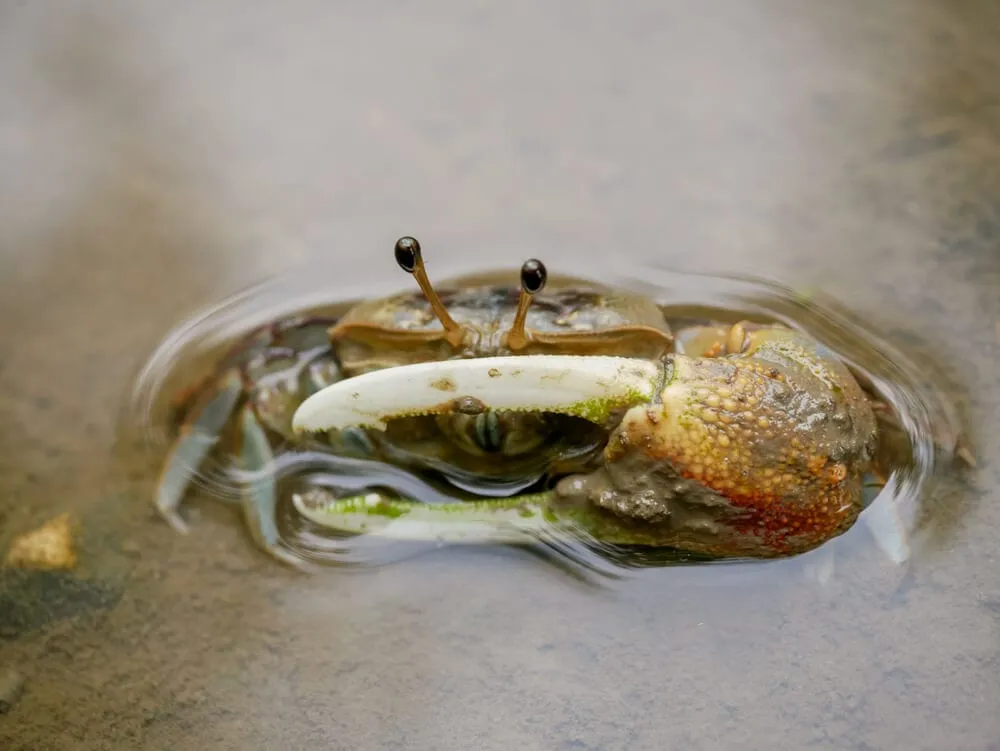Pom Pom Crab Care: Thorough Guide, Diet, Size And Tank Mates
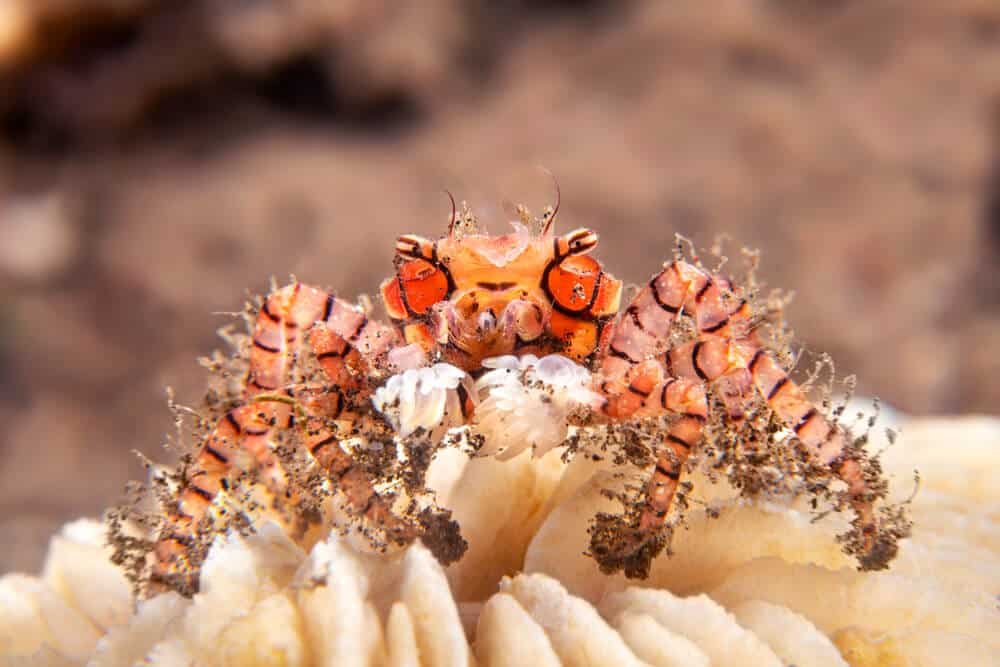
The Pom Pom crabs are lovely and distinctive creatures that most aquarists overlook. These lively little creatures are a lot of fun to have around, and they can help your tank’s general health.
However, there is ambiguity around what they need to thrive. The concept is still new; that’s why there are still many things we don’t know about them.
For your Pom Pom crab to survive, you’ll need to learn everything you can about what the aquarium industry understands about Pom Pom crab care. We gathered all of the information you need about Pom Pom crabs in this guideline to make things easier for you.
Lifespan
Unfortunately, taking care of these crabs is only a temporary task. Their usual lifespan is roughly a year.
Because the Pom Pom crabs’ lifespan is so limited, providing them with the best possible care is essential if to keep them alive for a longer period. Inadequate living circumstances may subject the crab to sickness and a variety of other health problems.
Appearance
As the name suggests, it gets its name from the hair that comes out of its arms. The hairs that develop from the claw give them the appearance of grasping cheerleader pom poms!
The bristles of males are pretty long and thick. They are rarely noticeable in females.
These crabs have various distinct morphological qualities in addition to their famous pom poms. For its size, the crab’s shell is fairly broad. Furthermore, the legs are slim and long.
The majority of specimens have a pale brown or yellow color. There may be some darker brown speckles splashed around their shell.
It’s easy to differentiate between females and males.
Take a glance at the length of the hair on the claws. You can also examine the crab’s underbelly. Pom Poms, as with all crabs, have a distinct plate.
The apron is a dish that changes in shape and size between men and women. A male’s apron is narrow but thin, while a female’s apron is curved and wide.
Size
A freshwater Pom Pom crab typically measures with a width between 0.6 inches to 1 inch. They can get over one inch if they have incredibly outstanding genetics.
Typical Behavior
They are an aquatic crab species, which means they spend their whole life cycle, from larvae to adults, underwater in freshwater.
This eliminates the need to create an aquarium with a combination of water and land. If given the chance, they will spend short amounts of time on land.
The Pom Pom Crabs in freshwater are more energetic than most crab species. They are frequently seen moving about the tank, looking for food. Because they are excellent climbers, their playful nature can be a challenge at times. They could be hidden behind the machinery.
To keep them from escaping, the aquarium must be sealed with a tight-fitting lid. They’re also capable of digging. They shift sand around and dig into the substrate with their claws.
They are typically peaceful, even though they are active. Males will occasionally exhibit to one other, but this rarely leads to damage. Your Pom Poms will practically disregard any other aquarium companions.
Molting occurs in all crustaceans, regardless of which ones you retain. This is the process of shedding an old exoskeleton to generate a larger one that can accommodate a growing person.
The new exoskeleton takes a few days to grow, during which time our crabs will be especially vulnerable because they no more have a hard shell to shield them.
They will most likely shelter in tunnels or burrows during the operation to limit the danger of injury. This could be the reason they vanish.
If you leave discarded exoskeletons on the substrate, they will be broken down and cause nitrate levels to rise.
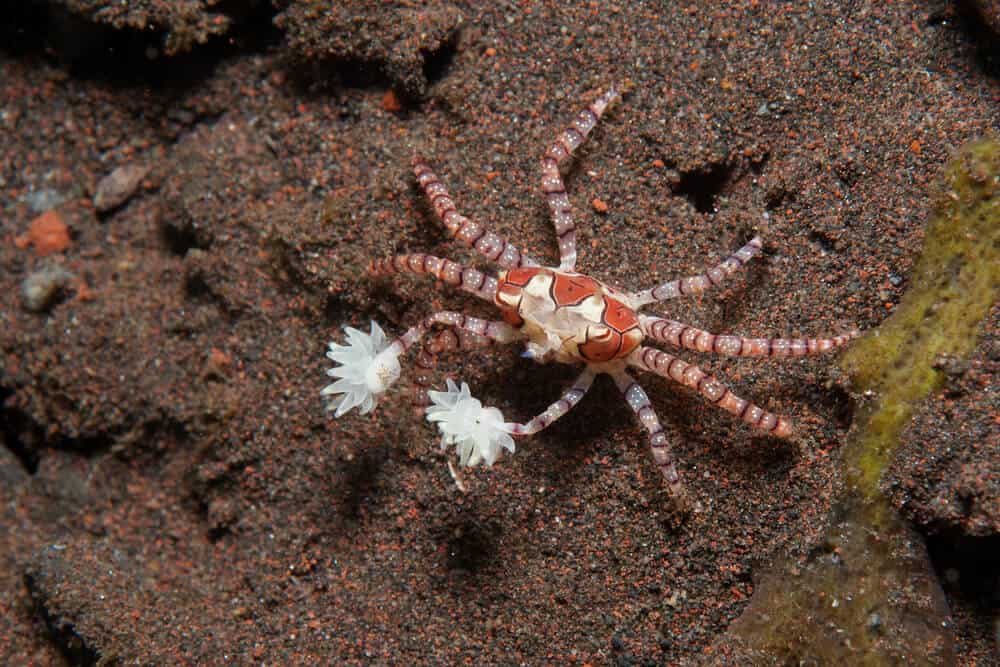
How To Take Care Of Pom Pom Crabs
The aquarium industry is still very new to the Pom Pom crab. Unlike other species, there isn’t a lot of precise information available concerning these crabs’ requirements.
But that doesn’t rule out the possibility!
Owners are working hard to learn and to figure out what they need to survive. We now have a few guidelines, thanks to their hard work.
Tank Size
Let’s start with the size of the tank. Pom Pom crabs can be kept in a five-gallon tank.
However, a 10-gallon aquarium is recommended to keep them more comfortable. Since they are active, they need room to explore.
One of the many advantages of having a Pom Pom crab is this. They don’t require a large tank to survive! If you happen to have an old tank lying around, that will usually be enough. But make sure they’re not overcrowded.
Parameters
It’s vital to keep in mind that these crabs prefer freshwater habitats. Don’t confuse them with crabs that thrive in saltwater. Despite their similar names, they are two distinct species with distinct habitat requirements.
The freshwater species are always seen along the coast. You can spot them in clean freshwater streams. They may enter brackish habitats, but solely for breeding.
The ideal water temperature they need is still up for dispute. Fortunately, they are tough and adapt well to a variety of environments.
Stick to these water parameters to keep your crab healthy and happy:
| Water Temperature: | 68°F to 78°F |
| PH Level Range: | 6.2 to 7.2 |
| Hardness Of Water: | Should be around 30 dKH |
What Should You Place In Their Tank?
The Pom Pom crabs are pretty active. They prefer decorated tanks so they can have plenty of things to do!
Use sand as your substrate. These creatures are burrowers who use their claws to move.
Natural decor materials such as driftwood and rocks can then be added. Crabs enjoy burrowing beneath decorations to make a comfortable resting space. After that, fill the tank with a variety of plants.
Although these crabs are not known to consume or damage living plants on intent, they can damage superficial root systems when digging. To prevent problems, you should add floating plants or ones with more strong root systems instead.
Lastly, always check that the tank is well-protected. These crabs may readily climb up water filters and leave the ecosystem. Put a tight lid on the container to keep these tiny breakout artists confined.
Can You Keep Them Together?
Freshwater Pom Pom Crabs are the only aquarium companions with whom they may demonstrate hostility. Even in this scenario, though, it is usually only males who are exhibiting to one another.
So, indeed, they can be kept together. However, fighting is uncommon.
What Do Pom Pom Crabs Eat?
These crabs are omnivores. They are natural scavengers who spend a lot of time looking for food.
· Dried foods
Dried foods are often the first thing that springs to mind for many individuals. This is most likely because they are inexpensive, widely available, and simple to store.
Dried meals such as flakes, pellets, and algal wafers are acceptable to these crabs.
The biggest issue with dried foods is that they are nutritionally deficient. To guarantee that your pets get all they need, you should always supplement a dried food diet with live/frozen food.
· Shrimp and Bloodworm
Nutrient-dense live and frozen meals Bloodworms and brine shrimp are two possibilities.
Your crabs should take some little pieces of green veggies from your kitchen if you slice them up and drop them in the tank as they wander by. However, if the vegetables are neglected, they should be removed.
· Calcium supplements
Calcium is necessary for the health of the Freshwater Pom Pom Crab. It’s required for growth and the formation of a protective hard exoskeleton.
Calcium supplements might be added to their diet if there isn’t enough calcium in their food. Most pet retailers should have these on hand.
Feed the crustaceans at least twice a week. They can typically locate enough food on their own in the aquarium, particularly if you’re feeding the other occupants.
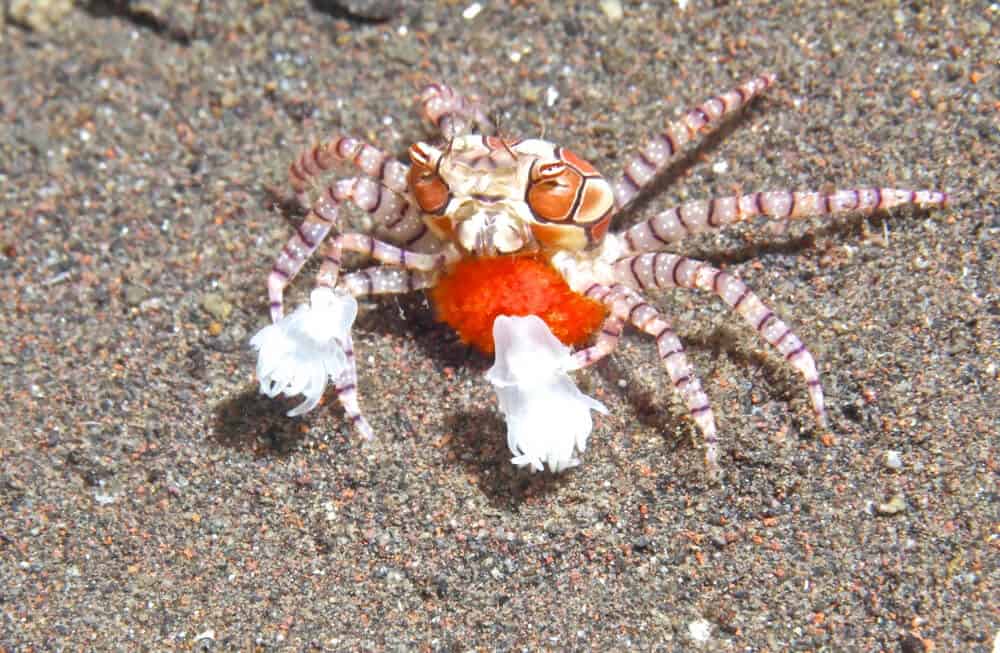
Molting Pom Pom Crabs
Freshwater Pom Pom crabs, like all crustaceans, must molt (lose their old exoskeleton) to grow. They begin pumping water into their bodies after shedding when the body is still soft and flexible. This causes the body to grow in size.
For them, molting is the most crucial and difficult step. They are highly vulnerable without a shell.
As a result, freshwater Pom Pom crabs would dig burrows and molt there to avoid predation. If they went missing for a day or two, it was most likely because they were molting.
Are Pom Pom Crabs Fully Aquatic?
The Pom Pom Crab can be found in both brackish and freshwater environments; however, it is thought that this crab exclusively spawns in brackish water. This crab is aquatic, unlike most freshwater crabs.
Is It Safe To Eat Freshwater Pom Pom Crabs?
The Pom Pom crabs haven’t been reported to devour live plants. They’re not going to trim them down as well. Crabs aren’t quite as terrible as crayfish. As a result, they are plant-safe in this regard.
They do, however, enjoy digging, as I previously stated. As a result, they may be able to dig up certain finer-rooted plants from the substrate. As a result, they may be able to eliminate vegetation that obstructs their overall activity.
Keeping floating plants or robust plants with a strong root system is the best solution.
Freshwater Pom Pom Crabs’ Water Type
Then it’s time to figure out what kind of water these crabs love to live in. Provide them with somewhat warm water because they are tropical critters.
Temperature
The recommended temperature range for tank water is 22 – 28°C (72°F – 82°F).
Maintain this temperature range with an aquarium heater and an aquarium thermometer (if your heater doesn’t come with one).
pH level
The pH level of the tank water for Freshwater Pom Pom Crabs should be between 6.8 and 7.2.
Hardness
The water should have a general hardness of 6-8 dGH, while the carbonate hardness should be 2-6 dKH.
Mineral Level
The quantity of ammonia and nitrite in the water should be zero. Before introducing your crabs to your tank, make sure it has gone through a nitrogen cycle. Nitrate levels should be fewer than 20 ppm. TDS should be between 150 and 200.

Procedure For Replacement
If you have a tiny tank, you should replenish 40 percent of the water once a week.
However, if you have a mid-sized or big tank, you should replenish 20 percent of the tank water weekly or 40 percent of the tank water monthly.
The fresh batch of water should have the same properties as the old batch of water (pH level, temperature, hardness, and so on).
Freshwater Pom Pom Crab Compatibility
The Pom Pom Crabs from freshwater can be maintained together. Even though they have brief conflicts (which are usually harmless), they are generally friendly with one another.
Freshwater Pom Pom Crab Tank Requirements
Let’s look into what they need in their tanks. After all, as a pet owner, one of your most important responsibilities is to provide them with an environment that closely resembles their natural home.
Tank Dimensions
In a 5-gallon tank, you can keep four Pom Pom Crabs. Please keep in mind that a tiny tank is considerably more challenging to maintain. When the tank is too small, it can easily become toxic for the aquatic animals.
The lack of space will have them competing for oxygen against each other. Moreover, you will also end up cleaning it more if the tank is smaller.
Lid For The Tank
This is critical because they are excellent escapologists. So make sure you have a good lid. If your crabs try to ascend to the top for some fresh air, the space between the water surface and the lid should at least be 4 inches or 10 centimeters.
They prefer sandy ground with small boulders covering it as a substrate. Make sure it is fine-grain so they may burrow more easily.
Do Pom Pom Crabs Need A Filter?
They don’t require much movement where they live, so a regular filter would suffice. Additionally, the job can be done with a sponge filter. You can also utilize a standard air pump.
Ornaments
As previously said, their native environment is full of pebbles and rocks. They require these for concealment. They also tend to hide when they molt. So adding fake castles, towers, caves, and driftwood can be very helpful.
Flora
With these crabs, you may keep plants inside the tank without endangering them. Although they eat plant waste, these crabs are not harmful to your plants. They can, however, uproot fragile tiny plants.
Plants that float are an excellent option. Make sure the floating plants don’t eat up the entire water surface, as this will prevent air and light from entering the water.
The most important thing to remember here is that if you’re using plant fertilizer, make sure it doesn’t contain copper, as copper can be harmful to crabs.
Lighting
For these crustaceans, standard aquarium illumination will suffice.
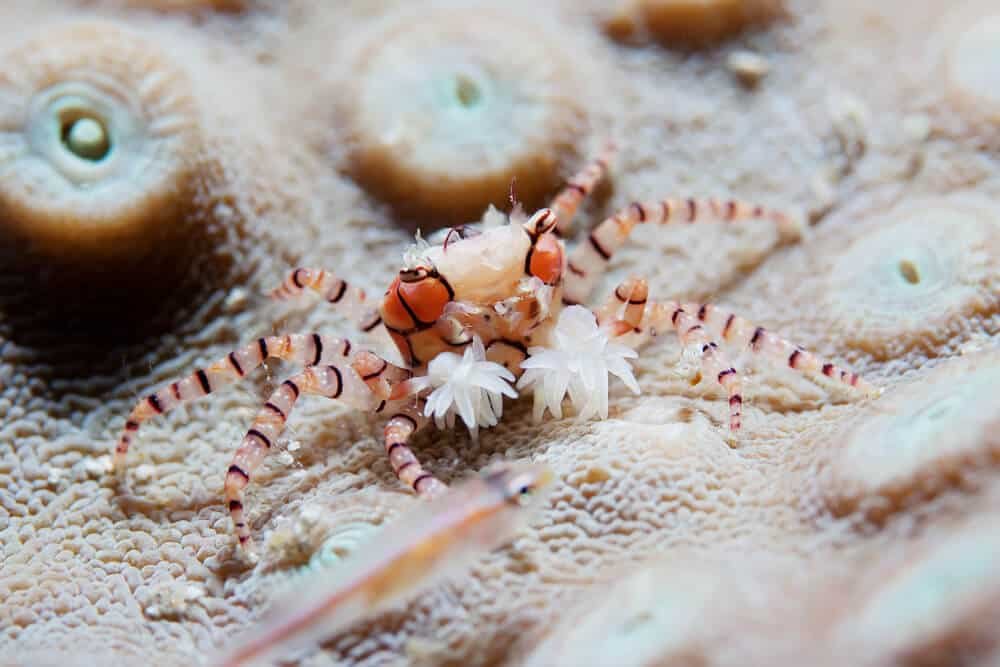
Cleaning Techniques
- Cleaning the tank regularly helps keep your crabs healthy.
- Clean your tank after 10 days if it’s tiny. Once a month is enough if your tank is large or medium-sized.
- If you use any soap-based items or other types of chemicals, the crabs’ health may be jeopardized.
- All you need to do is to rub the walls in the tank with a clean cloth. Make sure the cloth is soaked in lukewarm water.
- Using running water, remove the particles from the substrate.
- Cleaning the ornaments should be done with a soft-bristled brush.
- Remember that they also eat algae. Don’t peel it off too hard. You don’t have to remove all of them from your tank. Just a tiny fraction of the algal population should be kept in the tank.
- Keep your crabs in a container that has a lid while you clean the tank, so they don’t get out.
Diseases
Diseases that affect Pom Pom crabs are little understood. However, they are regarded to be disease-resistant as a whole.
We do know that they are susceptible to common ailments such as shell disease, which causes black lesions on the carapace. Fungal infections and parasite infestations are also frequent.
In most circumstances, keeping appropriate water conditions is the key to avoiding infections. Change the water frequently and keep a close eye on the parameters. When temperature or pH levels go outside of the acceptable range, crabs might become stressed or sick.
Since all specimens in the trade are wild-caught, you must be cautious about introducing disease into your tank. Before adding new crabs to an established aquarium, it’s critical to quarantine them.
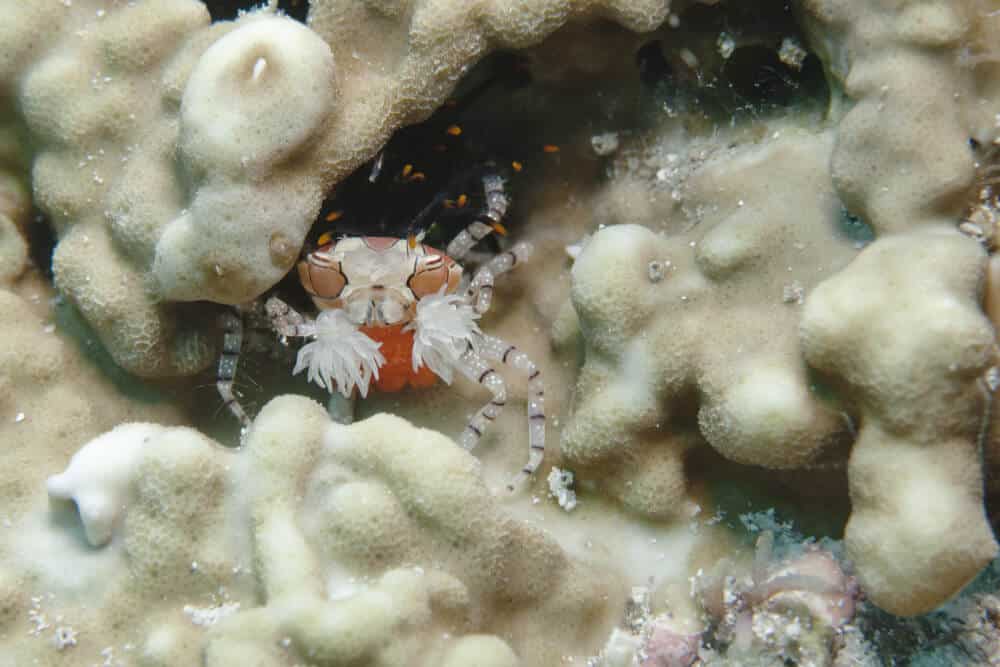
Temperament And Behaviour
Pom Poms are the polar opposite of other little freshwater crabs, who are bashful and usually hide. They’re quite energetic and will frequently run about the tank’s bottom looking for food. They often do a range of activities such as eat, dig, or climb.
The crabs are unconcerned by the other aquatic creatures in their environment. They’re one of the most tranquil freshwater crabs. You might witness some crabs fighting from time to time.
Fortunately, these brawls rarely escalate into anything catastrophic. You can also avoid their fights by giving each one enough food.
Molting is the only time they do not engage in active behavior. Pom Pom crabs, like most invertebrates, are vulnerable once they lose their old shells. Most Pom Pom crabs molt in peace on the sand to prevent damage and to be safe from other fish.
Are Pom Pom Crabs Nocturnal?
Pom Pom crab is a beautiful but often misunderstood micro crustacean, which is sometimes ignored because it is cryptic and nocturnal. Yet, it can be easily spotted in a small tank with a flashlight or lunar lamps when it is most energetic.
Tank Mates
One of the best things about them is how unconcerned they are with other crabs. You won’t see much engagement or acknowledgment from them as long as the other crabs or fishes don’t get in the way of their lifestyle.
Most peaceful freshwater shrimp, snails, crabs, and fish are good companions for Pom Pom crabs. Stick for gentle species that stay near the top of the aquarium if you want to maintain them with fish.
Blue Bolt Shrimp
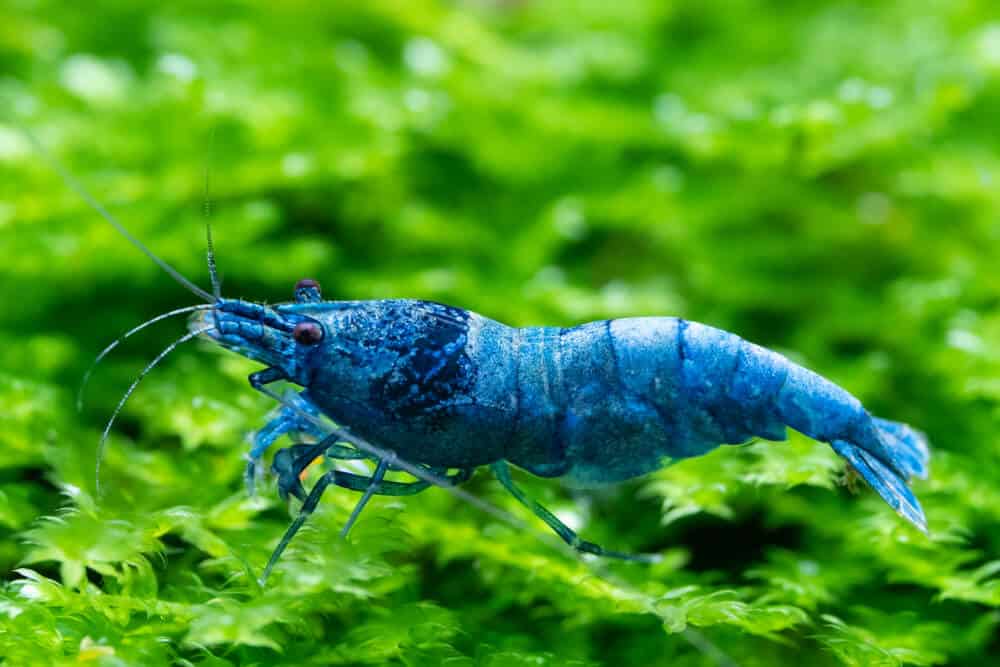
Red Ramshorn Snail

Smaller fish are preferable because they are less likely to consume or bother them. Moreover, the chances of them picking a fight on each other are small.
Can Pom Pom Crabs Be Kept With Shrimp?
Freshwater Pom Pom crabs are popular among fish and shrimp hobbyists because of their calm demeanor. They also make an excellent addition to a community tank.
Except for the occasional little skirmish among their species, they don’t show any violence. They’re even good with shrimp! Some aquarists, for example, keep them alongside Bamboo shrimp, Amano shrimp, Cherry shrimp, and other shrimp without losing any.
Breeding
There is currently no way to reproduce the freshwater Pom Pom crab in tanks. This is mainly because of their natural breeding process. These species are observed to migrate to brackish waters first so they can reproduce.
Before attaining maturity and traveling to freshwater rivers, the infants go through various larval phases. They grow in deeper brackish habitats from there, which are tough to recreate in captivity.
If you’re planning to breed Pom Pom crabs, it isn’t worth the time and effort.
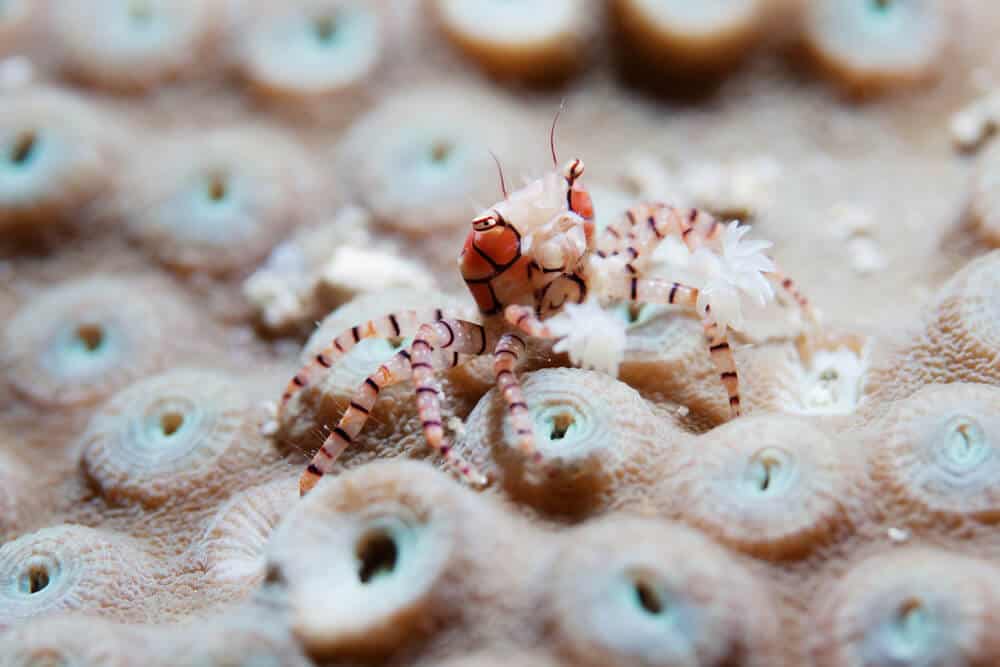
Wrapping Up
Pom Pom crabs are a relatively new addition to the aquarium hobby, but they are swiftly gaining popularity due to their tranquil demeanor and entertaining antics.
Taking care of a freshwater Pom Pom crab can be scary at first. There’s still a lot we don’t know, and it appears that development is slow.
Over the last few years, the conditions and advice we’ve included in this book have shown to be effective for owners. We’ll make sure to update this guide as we learn more about the circumstances these creatures require.
